Progress toward decommissioning:Work to improve the environment within the site
Immediate targets
- Reduce the effect of additional release from the entire power station and radiation from radioactive waste (secondary water treatment waste, rubble, etc.) generated after the accident, to limit the effective radiation dose to below 1mSv/year at the site boundaries.
- Prevent contamination expansion in sea, decontamination within the site.
Status of Progress Points
Based on the awareness that it is vital to prepare an environment within which workers are highly motivated as the long process of decommissioning begins, we will make efforts to ascertain needs in the field while continuing to improve the work environment and labor conditions by periodically conducting questionnaires of workers and exchanging information with contractors.
(1) Reduction of dose at site boundaries
- Preparatory work for two soil-covered temporary storage facility for debris has been completed and debris has begun to be received.
- Gas control systems have been installed at Units 1~3 to suppress the release of gaseous waste from the reactor buildings.
(2) Decontamination within site
- Attempts are being made to reduce the dose for the site overall by decontaminating inside the site. A mid-to-long term implementation policy for decontamination is being prepared and decontamination will proceed in line with this policy.
(3) Preventing spread of contamination in the sea
- Marine soil is being covered and a seawater circulatory purification device is being operated with the aim of reducing the concentration of radioactive materials in seawater in the port, and a certain effect has been confirmed.
- Work has begun full-scale on construction of an impermeable wall and construction is currently underway.
- Covering work has been completed using solidified soil to prevent the dispersion of marine soil having a high contaminant concentration in the area in front of the intake channels for Units 1~4 and Units 5 & 6.
(4) Ensuring work safety
- Radiation control
- Full-scale vehicle screening and decontamination will begin.
- Countermeasures to prevent the dishonest use of APD will be implemented. (Random inspections, introduction of protective suits that have clear chests, APD carrier identification, and carry confirmation)
- In order to reduce the burden on workers eliminating the necessity for masks and introducing dust filters will be gradually implemented.
- Health management
- Securing and deploying medical staff at treatment centers
- Countermeasures to prevent the infection and spread of influenza and the norovirus
- Expanded scope of cancer testing
- Establishment of a health consultation desk
- Mental health countermeasures
- Safety management
- Implementation of heatstroke prevention countermeasures
- Labor environment
- Establishment of various consultation desks
- Exchange of opinions with contractors
Efforts aimed at managing, processing and disposal of radioactive waste
(1) Suitable management of radioactive waste
- Debris collected in conjunction with debris removal work is being stored in temporary storage areas in accordance with material characteristics and dose rates, and felled trees are being temporarily stored after separating branches and leaves from the trunks as much as possible.
- Spent vessels and waste sludge which is secondary water treatment waste generated by cesium absorption devices(KURION, SARRY)and decontamination devices(AREVA). Spent vessels are being stored in concrete box culverts in the spent vessel temporary storage facility, and sludge are being stored in main processing building pit, respectively.
- Used protective clothing is being put into packages or containers and temporarily stored, and an advanced survey related to solidified waste incinerator facilities has begun.
(2) Research and development for processing/disposal of radioactive waste
- The characteristics of waste generated after the accident needs to be ascertained because it has characteristics different from conventional waste, such as being contaminated with radioactive nuclides originating from damaged fuel and containing a lot of saline that would have a detrimental impact on processing/disposal performance.
- Samples of accumulated water and treated water have been analyzed and an evaluation of the radioactive concentration contained in secondary waste is being conducted based on those results. Samples from debris and felled trees are also being analyzed.
- New analysis technology required for ascertaining the characteristics of waste after the accident is also being developed simultaneously.



Decontamination within Site
- For the purpose of obtaining basic data on decontamination technology, decontamination testing (paved surfaces: dust collecting system/dry ice blast/ultra-high pressure water cutter, etc.; grassland: peeling off top soil/plowing to replace surface soil with subsoil) has been implemented. Based on the results of these tests, optimum decontamination will be implemented in conjunction with decontaminated areas.
- Also, the applicability of decontamination-related technology (GPS surveying, decontamination effect prediction code (DeConEP)) is being verified. The use of such technology will streamline decontamination work. ※GPS surveying: A method in which an ionization chamber type survey meter and personal computer are connected to record location data and dose rate so as to ascertain dose rate distribution.DeConEP: Program for projecting the dose rate after decontamination by calculating the overall radiation quantity from in three-dimensional topographical map.

Devices used in test decontamination of pavement surfaces
Removal of contaminated water and filling of Unit 4 seawater pipe trench complete
- For the Unit 4 seawater pipe trench, removal of contaminated water and filling of the parts running over release channels was completed on December 21. This work completed the removal of 10,000 m3 of high-dose contaminated water from Unit 2-4 seawater pipe trenches.

Sectional view of Unit 4 seawater pipe trench
Reduction in Concentration of Radioactive Materials in Port Seawater
- As marine soil has been covered and seawater circulatory purification devices have been operated with the aim of bringing the concentration of radioactive materials in port seawater below the concentration limit for areas outside the perimeter monitoring zone as specified by public notice at the end of September, levels below the concentration specified by public notification (cesium) have been achieved at eight locations where the flow of seawater is comparatively large.
- With the cooperation of outside research institutes and others, additional investigations are being conducted to estimate factors keeping the concentration from decreasing and to study the necessity for additional countermeasures.
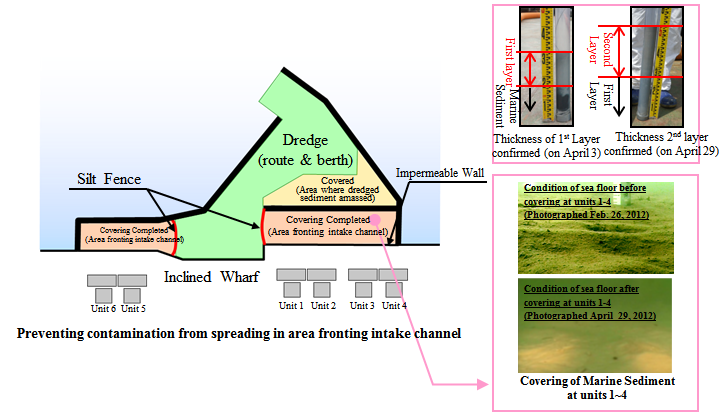
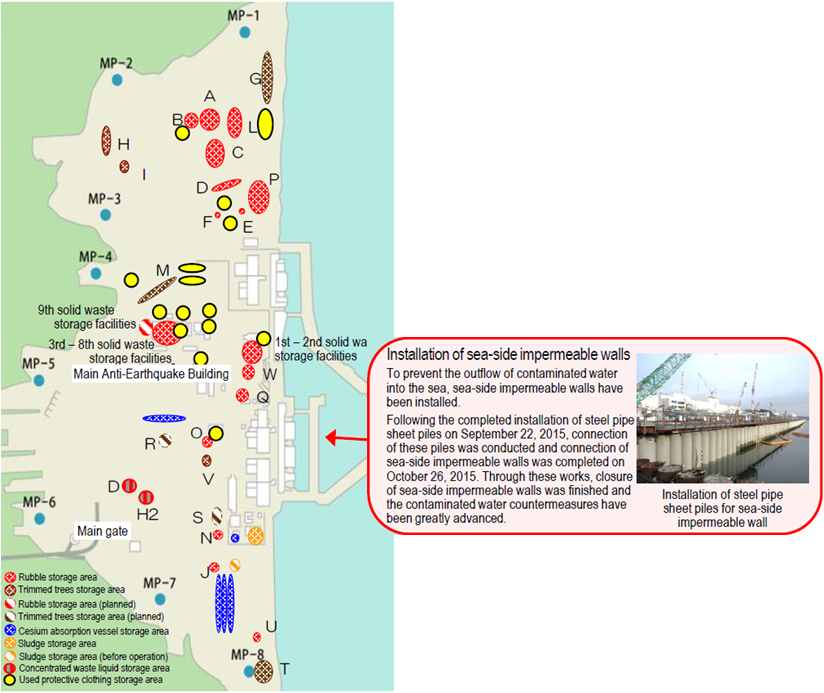
Improving living/working environments
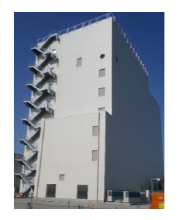
- Status of the large rest house
- A large rest house for workers was established and its operation commenced on May 31, 2015.
- Spaces in the large rest house are also installed for office work and collective worker safety checks as well as taking rest.
- On March 1, 2016 a convenience store opened in the large rest house. On April 11, operation of the shower room started. Efforts will continue to improve convenience of workers.
- Worker exposure will be reduced by erecting shielding, etc., at rest areas and in the seismic isolated building, etc. where workers spend long periods of time in order of priority. And, construction to reduce dose levels at rest areas in front of the office building/seismic isolated building that have a great impact on the exposure of workers will be continually implemented in order of priority (requested through the questionnaire)

Optimization of radioactive protective equipment
- Based on the progress of measures to reduce environmental dosage on site, the site is categorized into two zones: highly contaminated area around Unit 1-4 buildings, etc. and other areas to optimize protective equipment according to each category aiming at improving safety and productivity by reducing load during work.
- From March 8, 2016, limited operation started in consideration of workers' load.

Installation of dose-rate monitors
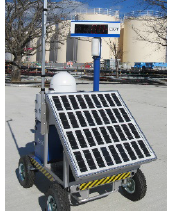
Installation of Dose-rate monitor
- To help workers in the Fukushima Daiichi Nuclear Power Station precisely understand the conditions of their workplaces, a total of 86 dose-rate monitors were installed by January 4, 2016.
- These monitors allow workers to confirm real time on-site dose rates at their workplaces.
- Workers are also able to check concentrated data through large-scale displays installed in the Main Anti-Earthquake Building and the access control facility.
Labor Environment
- Efforts to optimize employment
- Establishment of “Working Condition Consultation Desk” (May 17, 2003)
- Informal talks with primary contractors (June 25 through July 18, 2012)
- Exchange of opinions with former contractors (August 28, 2012)
- “Questionnaire regarding Working Conditions” implemented to ascertain work conditions. (Results released on December 3, 2014)
- Efforts to improve the labor environment
- To maintain vehicles used within the site, a vehicle maintenance site was established.
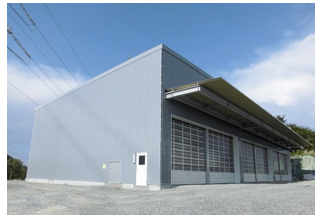
External appearance of the vehicle maintenance site
- General Measures
- In order to examine the status of improvements and ascertain improvement needs a “Questionnaire Regarding the General Working Environment "is being implemented twice a year
Future issues and the direction of countermeasures
Continual consideration of how to process and dispose of radioactive waste that will increase in future
- Waste generated from the accident has characteristics that differ from conventional nuclear power station waste (radioactive composition, saline content, etc.), so ascertaining the characteristics of waste and evaluating the amount is the most pressing issue in order to gain an outlook on safe processing/disposal and deliberate a systematic and regulative framework that will be necessary in the future.
- Therefore, while continuing with nuclide analysis in order to ascertain the characteristics of debris and secondary waste from water treatment, analysis issues, such as how to extract nuclides and how to remove harmful nuclides, will be deliberated and analysis technology established.
- While investigating and organizing documentation related to processing/disposal concepts and safety evaluations needed to deliberate on the outlook for safe processing/disposal, information and results about waste characteristics obtained through analysis are being used to create a database.
- Research and development will proceed with the cooperation of domestic research agencies as well as international agencies.
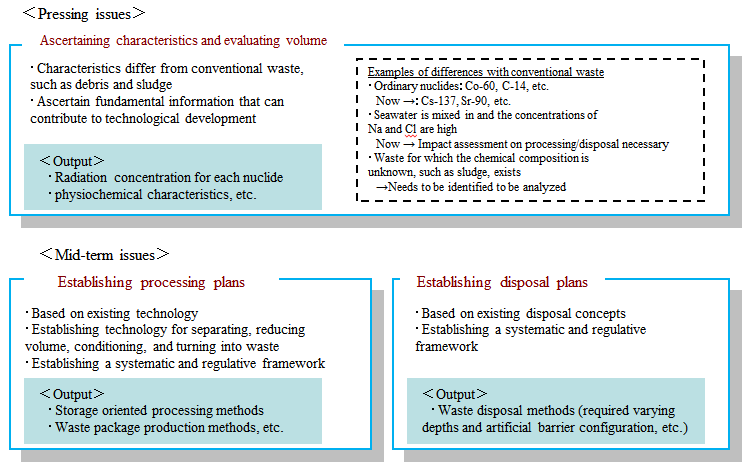
Radioactive Material Concentrations in Port Seawater & Achievement of Levels Below Public Notice Limits
- Additional investigations have been conducted to study concentrations in underground water and seawater in order to estimate variable factors and review the necessity of additional countermeasures. The review of additional countermeasures including purification and checking the spread of contamination will be implemented by the end of December in accordance with the investigation results.
- To verify levels below concentrations specified by public notice, measurement plans are being laid down, including the selection of target nuclides and the measurement and assessment will be performed.
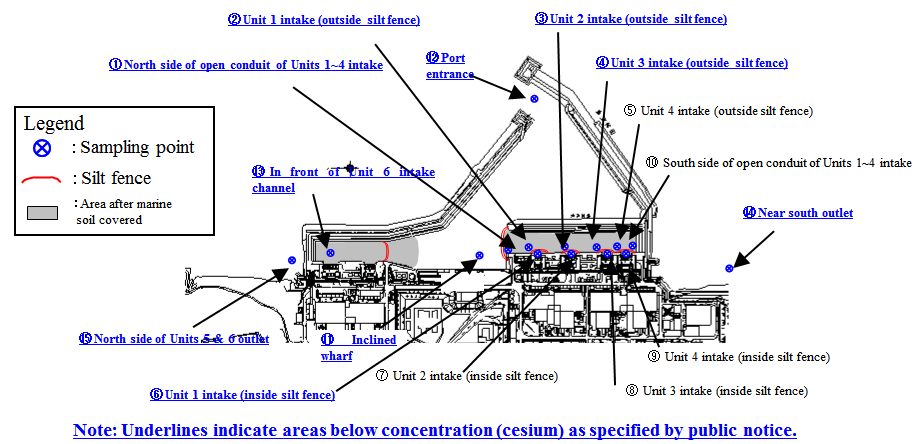
Considering the local community in regard to securing personnel in the long-term
- At current time it is not expected that a lack of personnel will hinder on-site work. In the mid to long-term high dose work, such as installing the reactor building containers and extracting fuel debris, will begin so in order to secure personnel in a stable manner we will continue to consider employing people from the local community while training specialized personnel and engaging in suitable radiation control.
Continued efforts aimed at improving the working environment and working conditions
- Along with continually and thoroughly striving to improve the working environment and eradicate unsuitable working conditions and employment contracts, we will also examine the status of improvements.